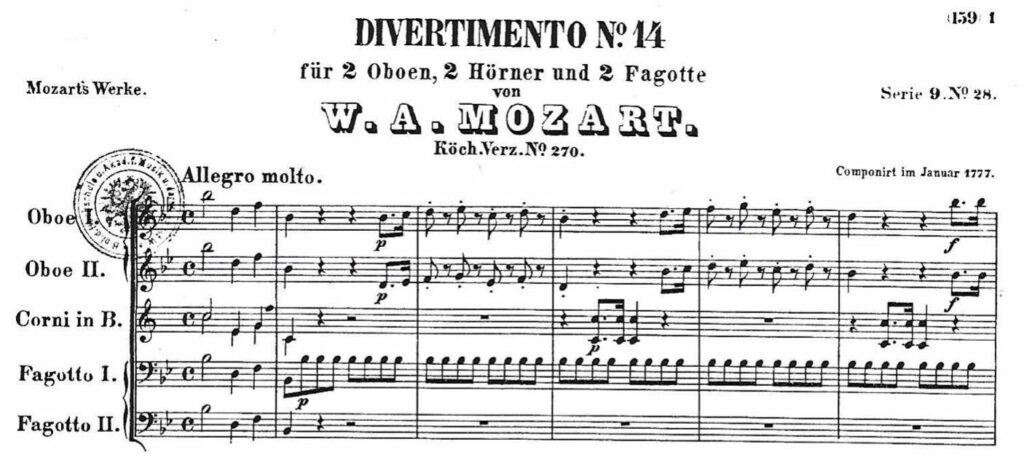Wolfgang Amadeus Mozart (1756-1791) Divertimento B-Dur, Marcia, KV 270

Als Divertimento (ital.: Vergnügen) bezeichnet man ein mehrsätziges Instrumentalstück. Dieses hat meist einen unterhaltsamen, heiteren Charakter und wird in unterschiedlicher Besetzung als „Tafelmusik“ oder „Freiluftmusik“ gespielt. Das Divertimento nimmt vor allem in der Wiener Klassik im Schaffen von Haydn und Mozart sowie deren Zeitgenossen einen breiten Raum ein. Im Original ist das beliebte Divertimento KV 270 in B-Dur mit den Satzbezeichnung Allegro molto – Andantino – Menuett. Moderato. Trio – Presto für zwei Oboen, zwei Hörner und zwei Fagotte gesetzt. Um auch Blechbläsern die Möglichkeit zu geben, anspruchsvolle Kammermusik zu gestalten, hat Prof. Hackl den ersten Satz dieses Werk für Blechbläser-Quintett gesetzt.

A multi-movement instrumental piece is called Divertimento (Italian: pleasure). This usually has an entertaining, cheerful character and is played in different casts as “table music” or “open-air music”. The divertimento occupies a large space above all in the Viennese classic in the work of Haydn and Mozart and their contemporaries. The popular Divertimento KV 270 in B flat major with the movements Allegro molto – Andantino – Minuet. Moderate. Trio – Presto is in original scored for two oboes, two horns and two bassoons. In order to give brass players the opportunity to create sophisticated chamber music, Prof. Hackl set the first movement of this work for brass quintet.
| sound sample / Tonbeispiel | score/parts PDF download: € 20,- | add to cart / in den Warenkorb |
